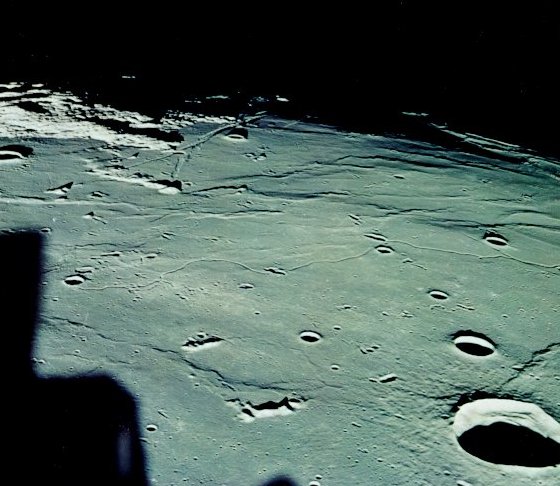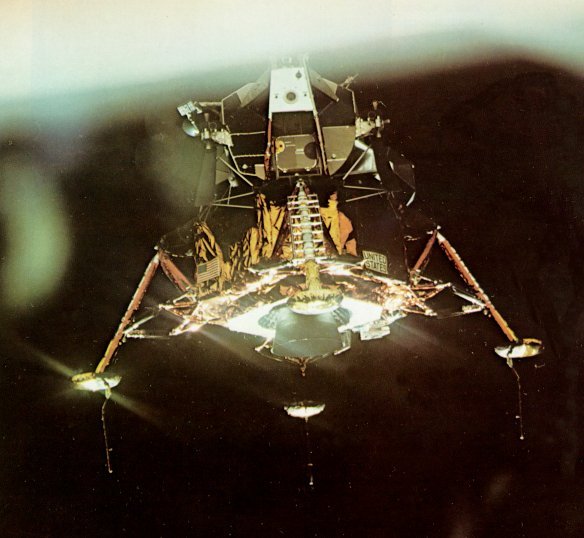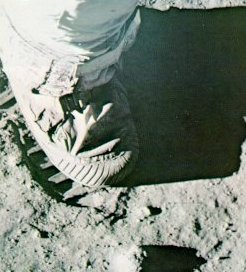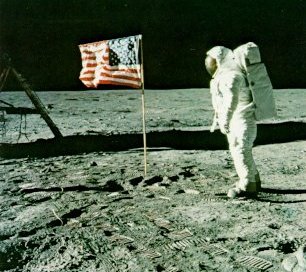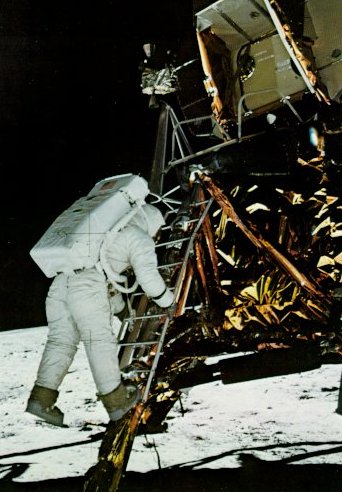
| Leaving the ninth step of the ladder,
Aldrin jumps down to the Moon. Earlier on the "porch" he had radioed, "Now
I want to partially close the hatch, making sure not to lock it on my way
out." Armstrong's dry response was: "A good thought." On Earth his weight,
including the spacesuit and mechanism-filled portable life-support system,
would have totaled 360 lb; but here the gross came only to a bouncy 60 lb.
The descent-engine exhaust bell (extreme right) came to rest about a foot
above the surface. |
